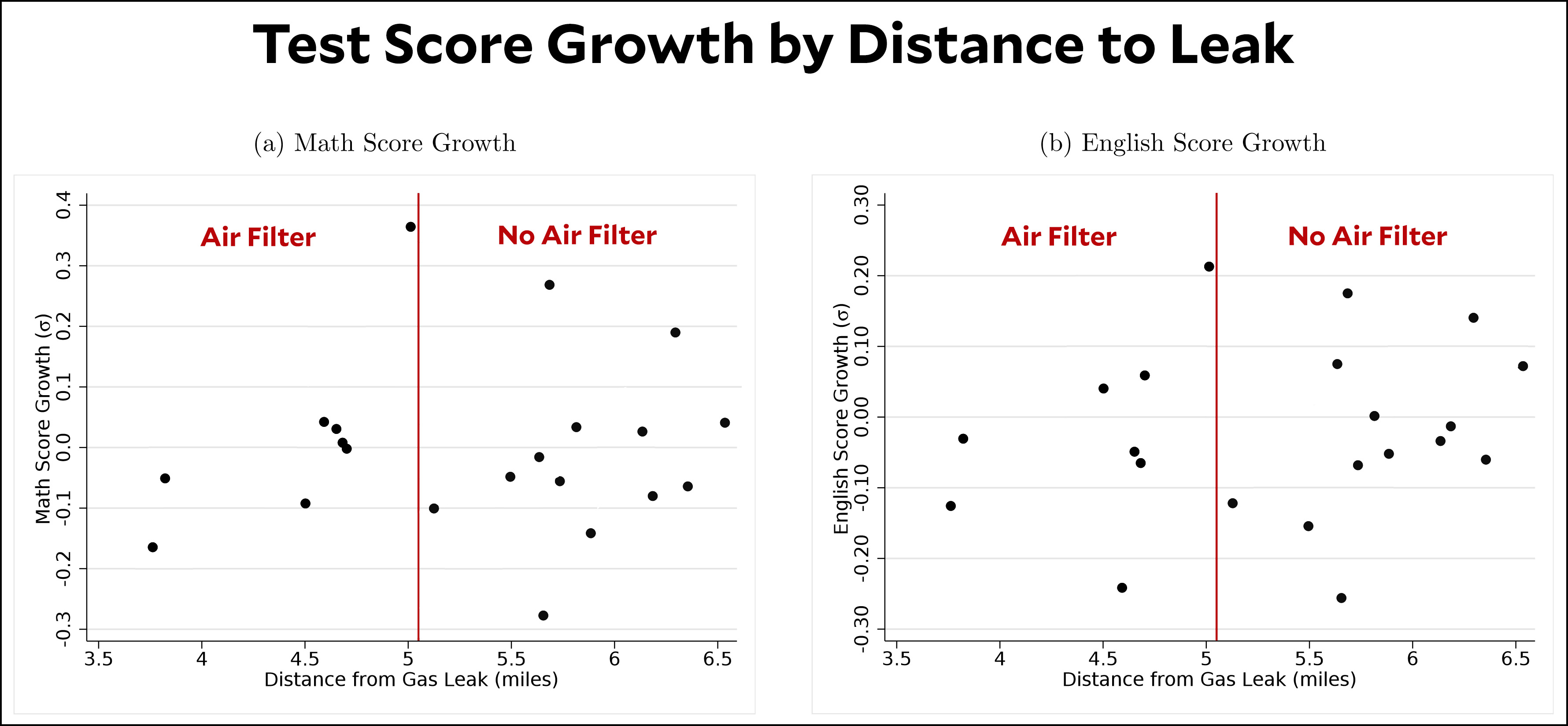Matt Yglesias passes along an interesting study that grew out of the Aliso Canyon natural gas leak, which was big news around here in 2015 as Southern California Gas employees spent months trying to plug a well that had blown out. As a precautionary measure, air filters were installed in schools within five miles of the leak even though measurements showed little deterioration of air quality. This provided Michael Gilraine of New York University with a natural experiment: did the air filters change student performance when you compared schools that were just inside the five-mile boundary with schools that were just outside? Gilraine concludes that the filters had a substantial effect. Here’s the raw data:

Hmmm. I can’t say that I see much difference in student performance between the schools within and without the five-mile boundary. However, that’s because I modified Gilraine’s chart to show just the data points and nothing else. Here’s the original chart:

This is known as a discontinuity test, but you can color me skeptical that there’s anything going on here. The sample size is small (about 20 schools on each side of the boundary); the discontinuity is based on a trendline even though there’s no reason to think that student performance should change with distance; the discontinuities are invisible to the naked eye; and only one of them is statistically significant in the first place—and that one just barely.
I’ve come across these kinds of discontinuity tests before, and I’m usually not very impressed with them unless the discontinuity is fairly large and obvious. That said, this result is intriguing and cries out for a more rigorous followup. Unfortunately, this would be fairly expensive: the filtering system runs about $1,000 per classroom, and in the Aliso Canyon schools the cost came to about $100,000 per school. Are there any billionaires out there who’d like to fund this?


















